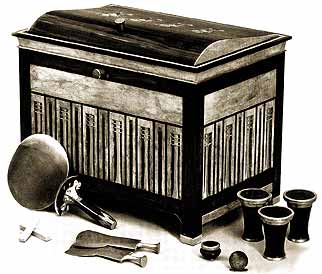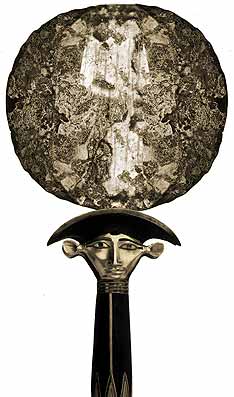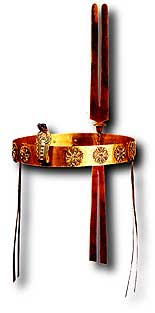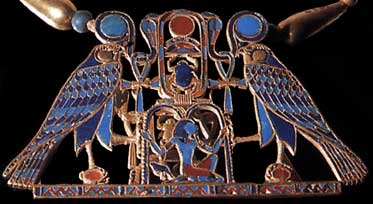|
When in 1914 Petrie returned to the pyramid complex of Sesostris II (he originally explored the site in 1889), he and his colleague Guy Bunton turned their attention to the south side of the pyramid, here they discovered four shaft tombs. Three of these shafts had been robbed in antiquity, and the fourth also seemed to have suffered a similar fate - the shaft itself seemed of lesser quality than the other three and so little was expected from it. However while descending the shaft one of the workers noticed a recess in the wall which had been filled with mud - once this mud was cleared a glint of gold! Petrie was unable to work in the shaft, and so Guy Bunton took over.(To read a little of Bunton's account CLICK HERE) �Once he had started to clear the items, Bunton never left the shaft - by day he carefully excavated each piece, and by night slept in the tomb/shaft to protect the finds from robbers. As each piece left the shaft, Petrie carefully washed and then photographed it. The jewellery and cosmetic vessels found in the recess were originally held in five ebony caskets (which had decayed over the centuries).
Some of the other items found include:
(Petrie originally offered the finds to the British Museum - such was the blinkered, negative response from the BM that these finds were then offered to the Metropolitan Museum of Art in New York - who snapped them up!) |





